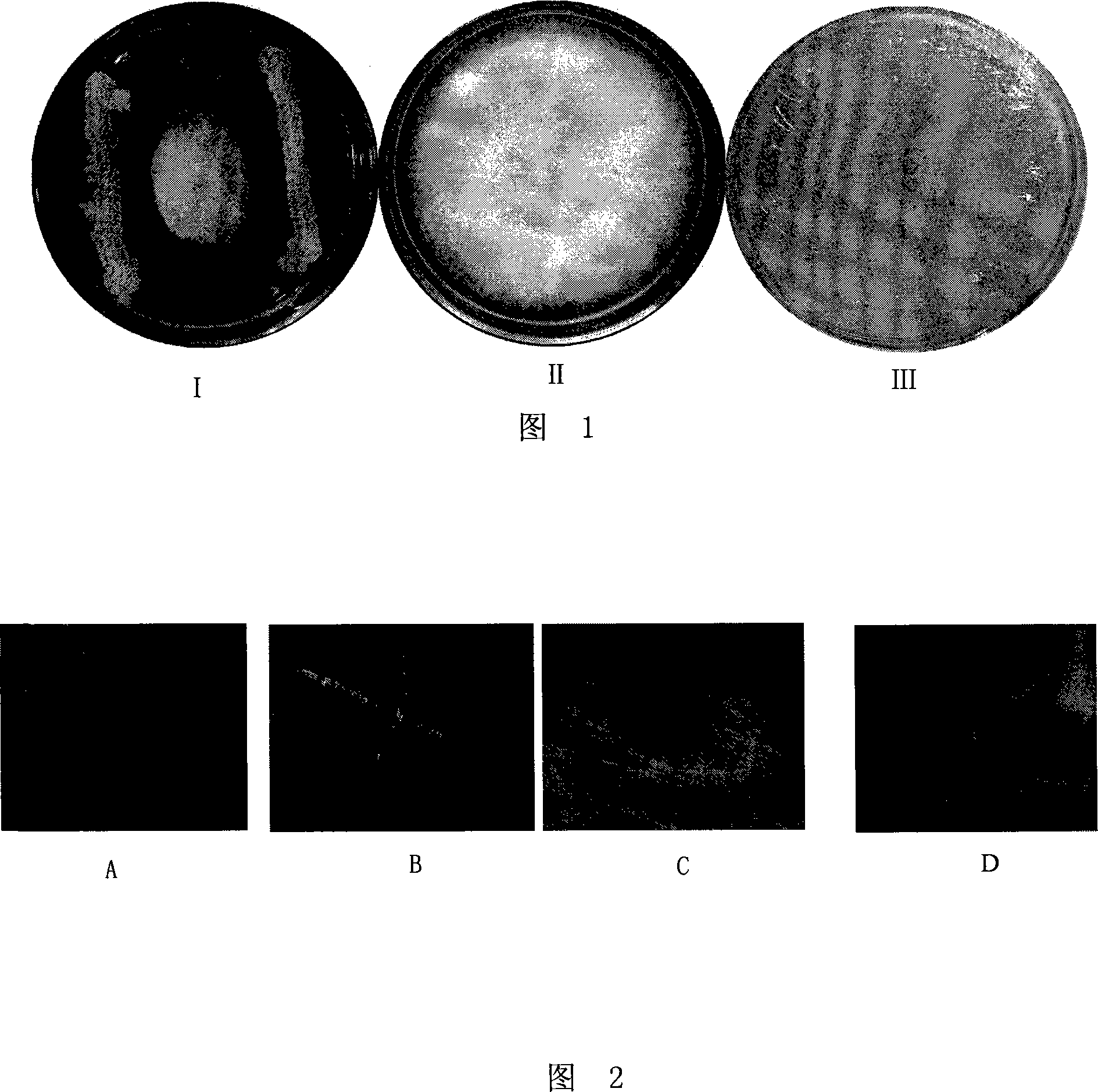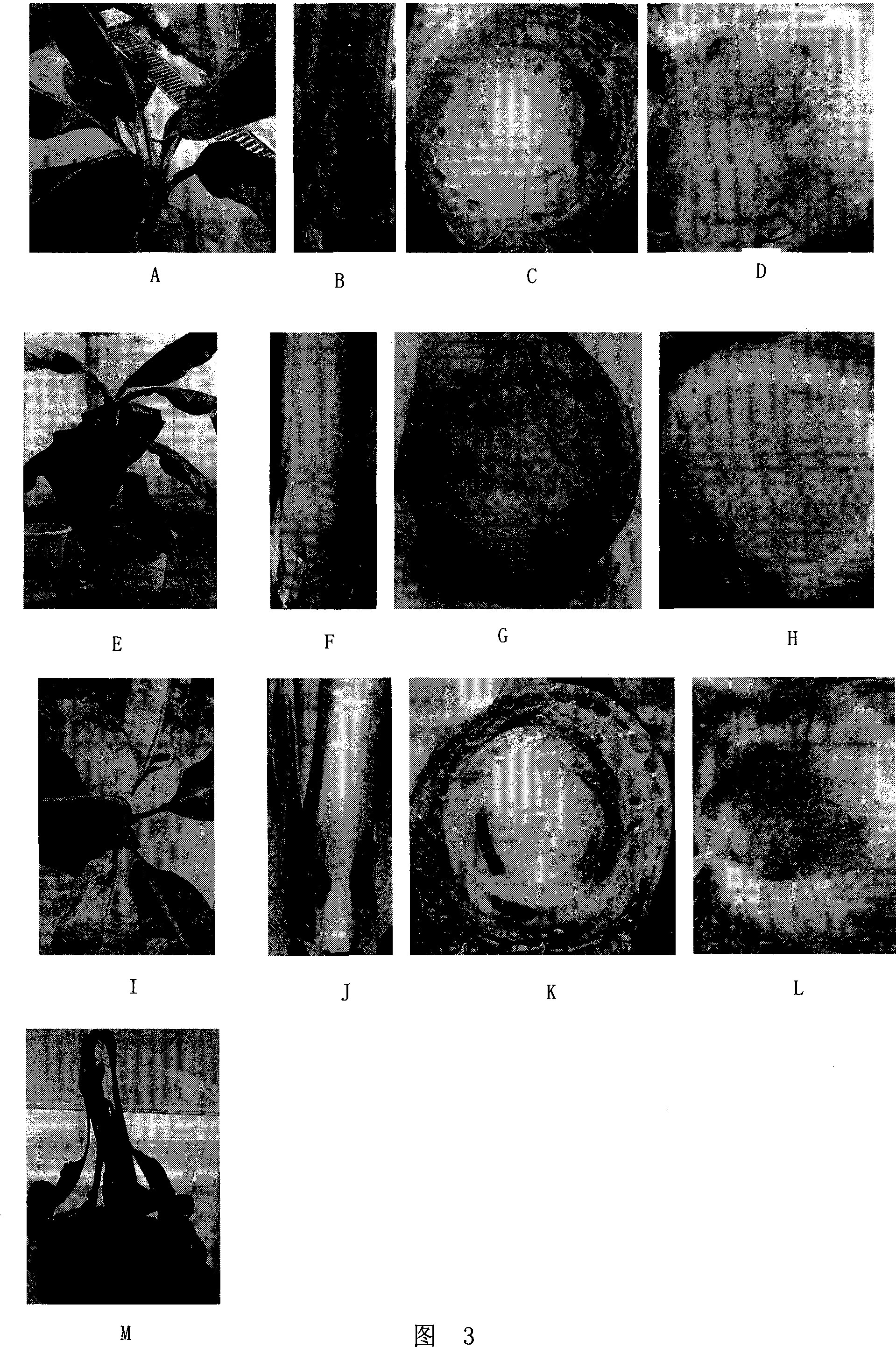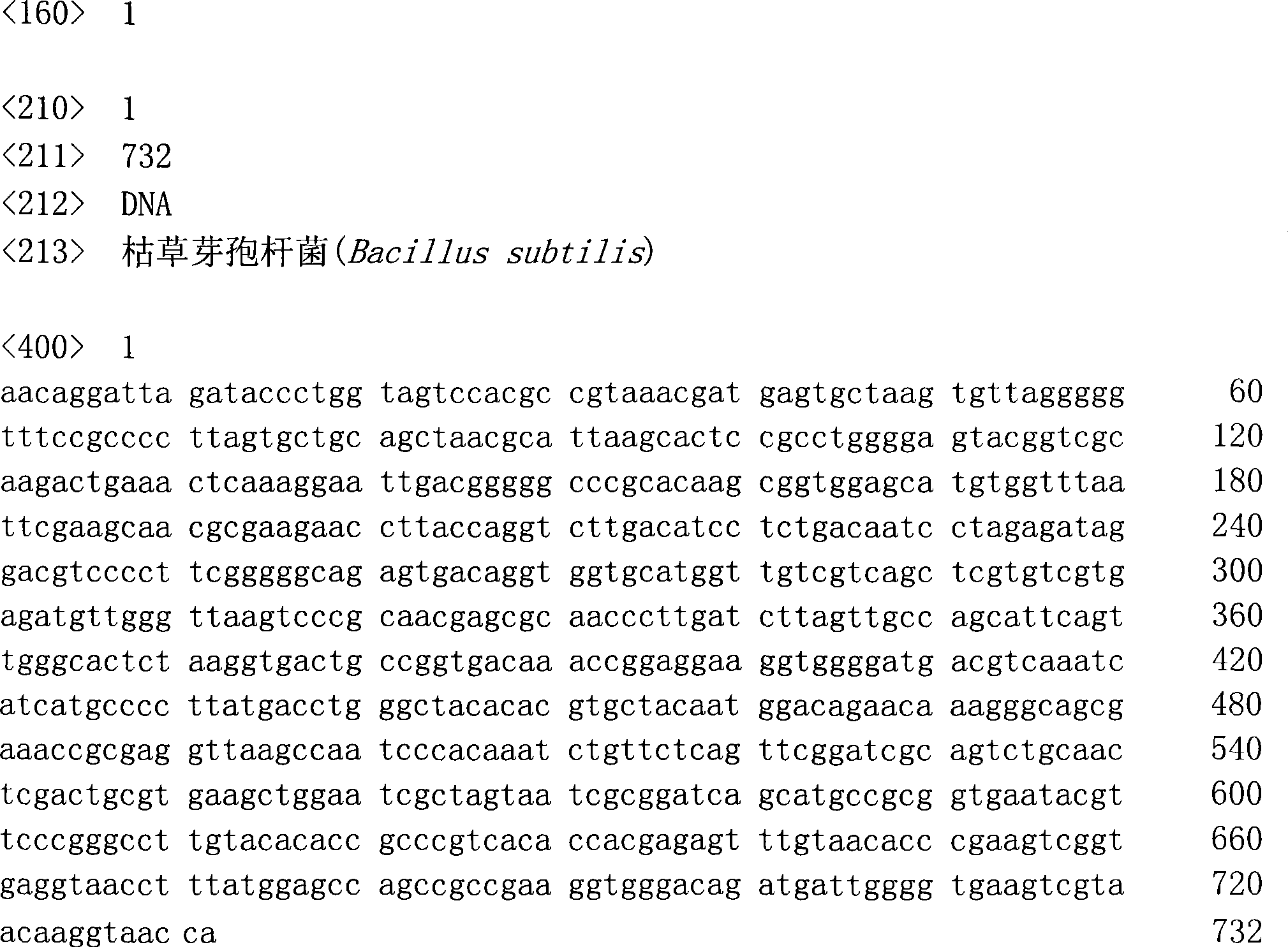Plant pathogenic fungi antagonistic bacteria strain and its use in control of plant diseases
A plant disease and disease technology, applied in applications, plant growth regulators, botanical equipment and methods, etc., can solve problems such as production constraints, long breeding cycles, and high manpower and funds.
- Summary
- Abstract
- Description
- Claims
- Application Information
AI Technical Summary
Problems solved by technology
Method used
Image
Examples
Embodiment 1
[0018] Embodiment 1, screening and identification of phytopathogenic fungus antagonistic bacteria
[0019] 1. Screening of antagonistic bacteria of plant pathogenic fungi
[0020] The bacterial strain of the present invention is isolated from the inside of a healthy banana plant in Xiqing Farm, Danzhou, Hainan. The specific method is: take 1 g of healthy banana plant tissue, after surface disinfection, put it into a sterilized mortar with 10 mL of sterile water, Add a little sterilized quartz sand to grind evenly, and let it stand for 15 minutes. Take 1mL and dilute to 10 -3 、10 -4 、10 -5 Concentration gradient, take 0.1mL from each concentration gradient suspension, and use a sterile applicator to spread it on NA medium (each 1000mL contains 5g of peptone, 1g of yeast extract, 3g of beef extract, 15g of agar powder, 10g of glucose, pH 7.0 ) plate, and the sterile water that washed the sample last time was used as the control. Inverted culture at 28°C, observed continuous...
Embodiment 2
[0049] Embodiment 2, Bacillus subtilis (Bacillus subtilis) BEB2 CGMCC No.2243 antibacterial spectrum determination
[0050] Take the Bacillus subtilis (Bacillus subtilis) BEB2 CGMCC No.2243 culture solution (28°C, shake Bed cultured for 24 hours, OD 600 The value is about 2.5) and 2mL is poured into 15mL PDA medium cooled to about 45°C, shaken gently to make the Bacillus subtilis (Bacillus subtilis) BEB2 bacterial solution and the medium fully mixed, and poured into a 9cm diameter Petri dish, Cooling is made into flat board, and the test pathogenic bacteria bacterium block (purchased from China Agricultural Microorganism Culture Collection Management Center, preservation number ACCCNo.31272) and banana anthracnose bacteria (purchased from China Agricultural Microbiology Culture Collection Management Center, preservation number ACCCNo.31247), rice blast fungus (purchased from China Agricultural Microorganism Culture Collection Management Center, preservation number ACCCNo.3032...
Embodiment 3
[0053] Embodiment 3, endophytic determination of Bacillus subtilis (Bacillus subtilis) BEB2 CGMCC No.2243
[0054] 1. Acquisition of resistance to chloramphenicol and streptomycin in Bacillus subtilis BEB2 CGMCC No.2243
[0055] Inoculate Bacillus subtilis (Bacillus subtilis) BEB2 CGMCC No.2243 into NB culture solution containing 10 μg / mL chloramphenicol and 10 μg / mL streptomycin, shake the bacteria for about 48 hours until the bacteria liquid becomes cloudy, take a small amount of culture The bacterial solution was inoculated into the NB culture solution containing 20 μg / mL chloramphenicol and 20 μg / mL streptomycin, and the bacterial solution was shaken for about 48 hours until the bacterial solution became cloudy. According to this method, the concentrations of chloramphenicol and streptomycin were gradually increased for cultivation, and finally Bacillus subtilis (Bacillus subtilis) BEB2 CGMCC No. .2243 cells, according to the method in Example 1, confirm that the biologic...
PUM
 Login to View More
Login to View More Abstract
Description
Claims
Application Information
 Login to View More
Login to View More - R&D
- Intellectual Property
- Life Sciences
- Materials
- Tech Scout
- Unparalleled Data Quality
- Higher Quality Content
- 60% Fewer Hallucinations
Browse by: Latest US Patents, China's latest patents, Technical Efficacy Thesaurus, Application Domain, Technology Topic, Popular Technical Reports.
© 2025 PatSnap. All rights reserved.Legal|Privacy policy|Modern Slavery Act Transparency Statement|Sitemap|About US| Contact US: help@patsnap.com



